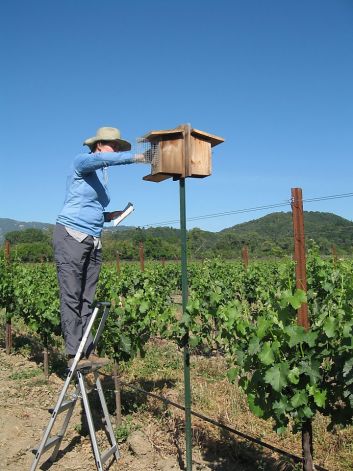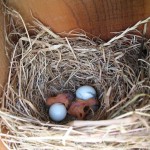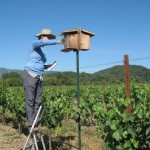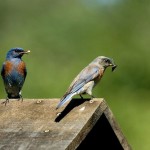Joe Eaton and Ron Sullivan
The Bluebird of Happiness has a new gig. Now it’s the Bluebird of Ecosystem Services.
That would be the western bluebird, a widespread California native. This colorful little thrush nests in tree cavities, often moving in after the original property developer, a woodpecker, has moved out. New research by UC Berkeley postdoctoral scholar Julie Jedlicka suggests that setting up bluebird nest boxes – surrogate cavities – in vineyards can help control insect pests. As the birds colonize urban areas in the East Bay and South Bay, they may be a boon to home gardeners, too.
In nesting season, a western bluebird pair stays busy catching insects – grasshoppers, caterpillars, beetles, bugs, ants, wasps, flies, termites and scale insects – for their voracious offspring. “Bluebirds have a wide general foraging style: on the ground, on vegetable matter, on leaves, in the air,” Jedlicka explained. “They’re targeting a lot of different spaces that insects inhabit.” In a good year, the parents can rear two broods; with four to six eggs per clutch, that’s a lot of hungry mouths to feed.
To test bluebirds’ pest control talents, Jedlicka set up redwood nest boxes in four Northern California organic vineyards managed by Fetzer in 2008. UC Santa Cruz interns built the boxes to North American Bluebird Society specs, with 1 1/2-inch entrances to exclude European starlings, notorious takeover artists. Western bluebirds quickly moved into about a third of the boxes.




